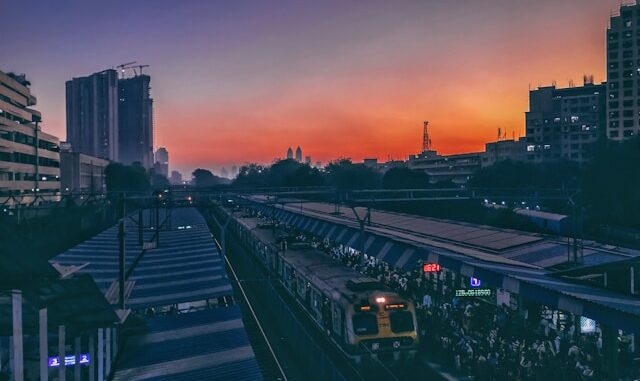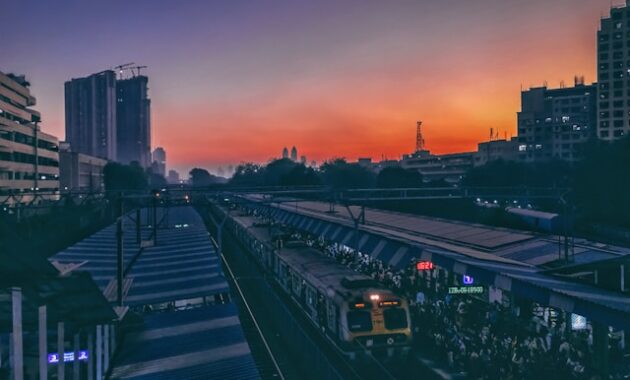
Mumbai, the financial capital of India, is known for its bustling streets, diverse population, and extensive transportation network. Whether you are a local or a first-time visitor, understanding Mumbai’s transport systemcan significantly enhance your commuting experience. From the iconic Mumbai local trains to auto-rickshaws and the ever-expanding metro network, this guide covers everything you need to know to commute efficiently in Mumbai.
1. Mumbai Local Trains: The Lifeline of the City

The Mumbai Suburban Railway, commonly referred to as the Mumbai local train, is the city’s most affordable and efficient mode of transport. With three main lines—Western, Central, and Harbour—the trains connect the city’s northern suburbs to South Mumbai, where most business districts are located.
Key Tips for Traveling by Local Trains:
- Purchase a Smart Card: Avoid long queues by getting a smart card or using the UTS mobile app for paperless ticketing.
- Understand the Train Categories: Local trains are categorized into fast and slow trains. Fast trains skip smaller stations, making them quicker but more crowded.
- Ladies Special and First-Class Coaches: Women travelers can opt for Ladies Special coaches, while First-Class coaches offer a less crowded but more expensive alternative.
- Avoid Rush Hours: Peak hours are between 8 AM to 11 AM and 5 PM to 9 PM, where the trains are packed.
2. Mumbai Metro: The Future of City Transport
The Mumbai Metro is rapidly expanding, offering a comfortable and air-conditioned alternative to the local trains. The Versova-Andheri-Ghatkopar (Line 1) is currently operational, with several other lines under construction.
Advantages of the Mumbai Metro:
- Faster and Less Crowded: Metro trains run on dedicated tracks, avoiding road congestion.
- Air-Conditioned Comfort: Unlike local trains, the metro is fully air-conditioned, making it a great choice during Mumbai’s hot summers.
- Integrated Ticketing System: The Mumbai Metro card-based ticketing system makes transactions quick and seamless.
3. BEST Buses: Budget-Friendly and Extensive Coverage
The Brihanmumbai Electric Supply and Transport (BEST) buses provide a cost-effective way to navigate the city. The fleet includes AC and non-AC buses, covering almost every part of Mumbai.
Why Choose BEST Buses?
- Low Fare Structure: BEST buses are one of the cheapest travel options in Mumbai.
- Extensive Network: Buses reach places where trains or metros might not.
- Digital Ticketing: The Chalo app enables cashless payments and real-time bus tracking.
4. Auto-Rickshaws and Taxis: Convenient for Short Distances
Auto-rickshaws and taxis are ideal for short distances or areas without train or metro connectivity. However, knowing a few insider tips can make your ride smoother.
Things to Keep in Mind:
- Fare Meters: Always ensure the meter is running, or check the tariff card for accurate pricing.
- Uber and Ola: For a more reliable experience, use ride-hailing apps like Uber or Ola.
- Night Charges Apply: Fares increase by 25% between 12 AM and 5 AM.
5. Ferries: A Scenic and Time-Saving Option
For those traveling between South Mumbai and Navi Mumbai, ferries offer a quick and scenic alternative. Popular ferry routes include Gateway of India to Elephanta Caves and Bhaucha Dhakka to Uran.
Benefits of Ferries:
- Avoids Road Traffic: Ideal for bypassing congested roads.
- Affordable Travel: Ticket prices are reasonable compared to taxis.
- A Unique Experience: Offers breathtaking views of Mumbai’s coastline.
6. Cycling and Walking: An Eco-Friendly Alternative
With increasing traffic congestion, many Mumbaikars are choosing to cycle or walk for short distances.
Best Areas for Walking and Cycling:
- Marine Drive: A scenic stretch along the Arabian Sea.
- Bandra Bandstand: Perfect for an evening stroll.
- Aarey Colony: Ideal for cycling amid greenery.
7. Car Rentals and Self-Drive Options
If you prefer driving in Mumbai, consider using self-drive rental services like Zoomcar or Drivezy. However, be prepared for heavy traffic and limited parking spaces.
Driving Tips in Mumbai:
- Avoid Peak Hours: Traffic congestion is at its worst during rush hours.
- Use Navigation Apps: Google Maps and MIndicator help find the best routes.
- Check Parking Availability: Many areas have strict parking regulations.
8. Safety Tips for Commuting in Mumbai
Navigating Mumbai can be overwhelming, but staying vigilant ensures a safe journey.
- Keep Your Belongings Secure: Pickpocketing is common in crowded areas.
- Stay Hydrated: Mumbai’s humidity can be exhausting; carry a water bottle.
- Use Official Transport Apps: To avoid scams, rely on verified apps for ticketing and ride-booking.
Conclusion
Commuting in Mumbai may seem daunting at first, but with the right knowledge, it can be efficient, cost-effective, and even enjoyable. Whether you choose the local train, metro, bus, or ferry, each mode of transport has its own advantages. By planning ahead and using digital tools, you can navigate Mumbai like a true local.